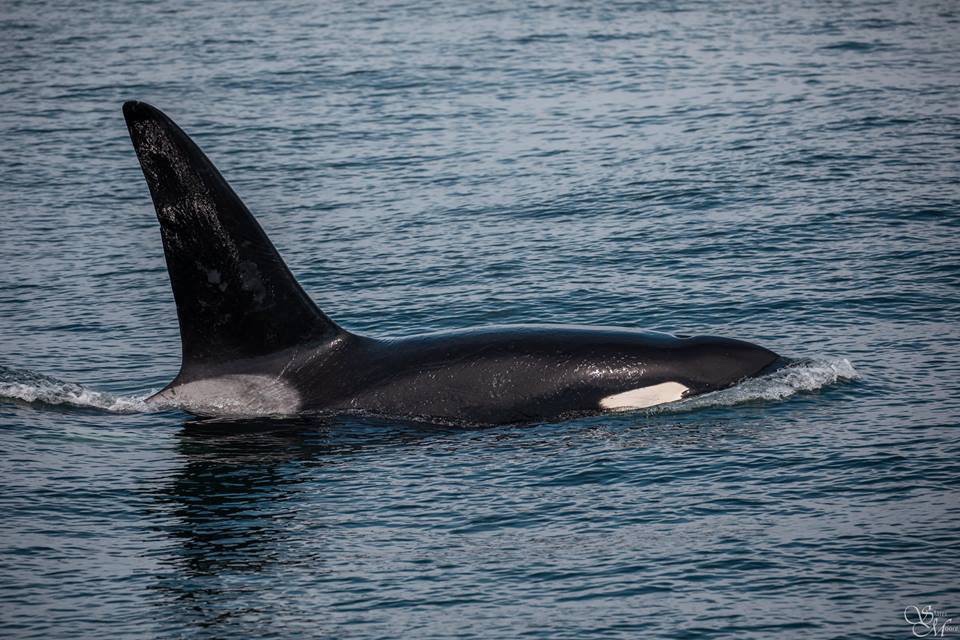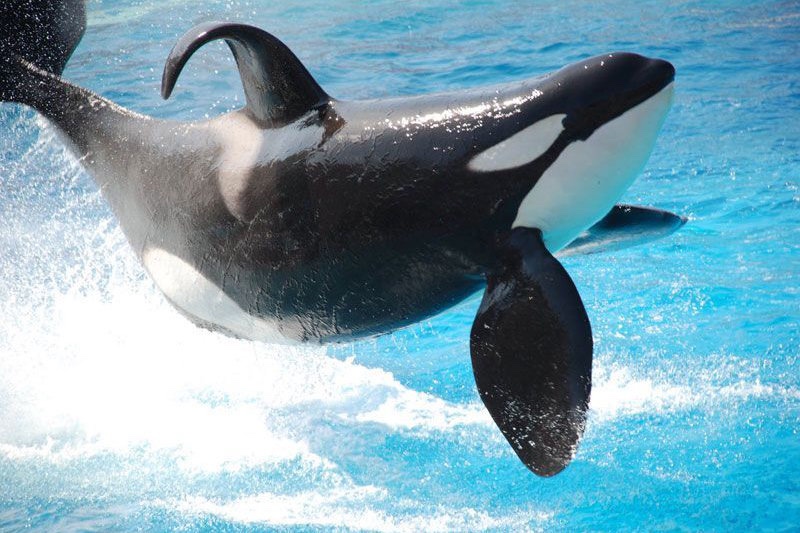A killer whale’s dorsal fin can grow several feet long, with an adult male’s fin growing up to six feet – the tallest dorsal fin of all cetaceans. Despite its size, the dorsal fin is not supported by bone but consists of a fibrous connective tissue made of collagen, a structural protein. Swimming at speed, in straight lines, and in deep water provides pressure to the fin, encouraging the fin to remain healthy and straight. In wild orcas, multiple factors such as emaciation, stress, old age, dehydration, exposure to oil spills, and injury caused by altercations with conspecifics or entanglement can lead to a loss of structural integrity in the fin, which can cause it to partially or completely collapse.

Photos by Slater Moore with Discovery Whale Watch.
Although dorsal fin collapse is not unique to captivity, it is far more common in confinement. In the wild, the condition varies from population to population. For example, according to Dr. Ingrid Visser’s 1998 study on fin abnormalities, the percentage rate of wild whales with collapsed, collapsing or bent dorsal fins sits at 4.7% in British Columbia and 0.57% in Norway. Yet in New Zealand, 23% (7/30) of adult males in one small population of 125 orcas had dorsal fin abnormalities – an unusually high rate, likely due to the fact that New Zealand rates highest in the world for the number of boat collisions involving orcas. However, only one of the 125 (0.8%) had a collapsed dorsal fin. This perfectly aligns with Dr. Astrid van Ginneken’s conclusion that less than 1% of all wild orcas have a collapsed dorsal fin. In contrast, 100% of all adult male orcas in captivity have a collapsed fin, as well as some females (Katina, Nalani, Shouka, Narnia, Stella, and Kiska), despite no wild female orca being recorded as having a collapsed dorsal fin.

Photo submitted by orcalover14
The common causes of dorsal fin collapse in captivity are vastly different to causes of the condition in the wild. Due to the confined environment, orcas are restricted in their ability to travel rapidly over vast distances and dive at depth; this results in pattern swimming, logging at the surface and exercising less. These captivity-produced behaviours lead to a lack of water pressure applied to the fin, and the reduction of support causes the fin to fall over. Other factors such as chemicals used in the water; warmer water temperatures; medication; a reduced ability to thermoregulate due to excessive exposure above water; and a lower water content diet leading to dehydration, can all contribute to the collapse of a killer whale’s dorsal fin. According to a report by Wende Alexandra Evans on flaccid fin syndrome (dorsal fin collapse), 20 out of 26 experts list captivity as the main reason for the condition.